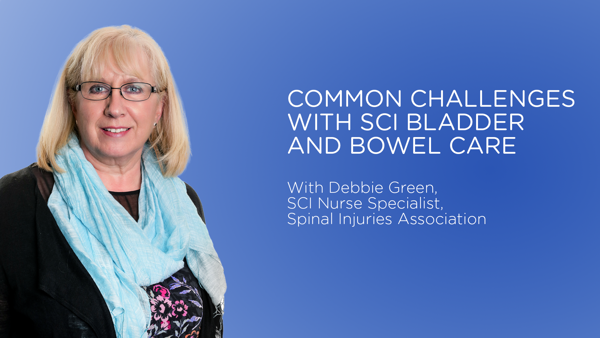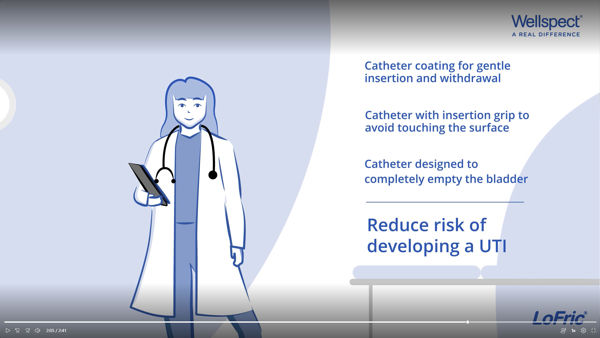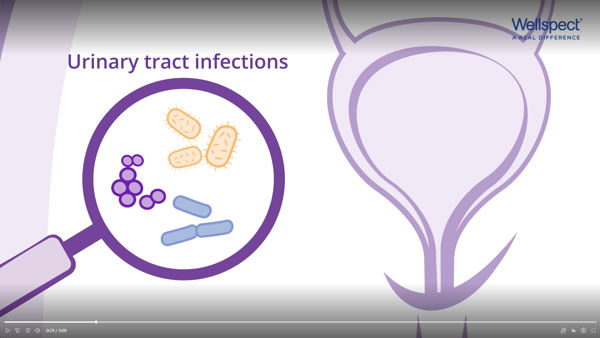Articles and Webinars
Whether you are a carer, a specialist, or completely new to continence care, Wellspect Education provides learning resources for your level of expertise
Whether you are a carer, a specialist, or completely new to continence care, Wellspect Education provides learning resources for your level of expertise

key:global.content-type: Video
In this webinar, Bev Collins, Clinical nurse lead, Wellspect, will tell you the most important information you need to know about transanal irrigation (TAI), how to use Navina Irrigation System and some tips and tricks to improve adherence.

key:global.content-type: Video
In this webinar, Bev Collins, Clinical nurse lead, Wellspect, will talk you through conditions in children that may lead to bowel dysfunction.

key:global.content-type: Article
For those who rely on intermittent catheterization, minimizing discomfort is a key concern. This short video explores the science behind a smoother catheterization experience.

key:global.content-type: Video
In this informative short video (approx. 5 minutes), Susanne Vahr, a registered nurse and senior researcher with nearly 30 years of experience in urology, dives deep into the complexities of urinary tract infections (UTIs).

key:global.content-type: Video
Bev Collins, Clinical nurse lead, Wellspect, explains what Autonomic Dysreflexia (AD) is, talks through some of the main causes or triggers of this syndrome and what the symptoms of AD are.

key:global.content-type: Video
Debbie Green, spinal cord injury specialist lead, SIA, addresses some of the issues facing someone with a spinal injury with their bladder and bowel care.

key:global.content-type: Article
Jessica Aparo, Pelvic Floor Specialist at Oxford University Hospitals NHS Trust, talks about the assessment of patients being considered for Transanal Irrigation.

key:global.content-type: Video
In this webinar you will hear from Consultant Physiotherapist Julia Herbert talking on pelvic floor dysfunction, the associated symptoms and the management options that are available.

key:global.content-type: Video
Intermittent catheterization is the gold standard for bladder management, however there is an increased risk for urinary tract infections (UTIs) compared to natural bladder emptying. To help avoid getting UTI’s there are special catheter requirements to consider, and not all catheters are the same. Watch this short, descriptive animation demonstrating the optimal conditions for gentle and successful catheterization to avoid complications such as UTIs.

key:global.content-type: Video
Urinary tract infections are complex and occur as a result of interactions between the uropathogen and host and involves several processes as well as many different risk factors. The most common bacteria found to cause UTIs is Escherichia coli (E. coli), about 90 percent of the time. Watch this descriptive stepwise animation for a clear understanding of the sequential process of how a UTI occurs.

key:global.content-type: Video
Short films which answer common questions asked by people with Multiple Sclerosis (MS) about bladder dysfunction. These films are aimed at people with MS and uses language and explanations that you may find particularly useful when having discussions with someone who has MS or cares for someone with MS.

key:global.content-type: Video
Clinical Nurse Specialist, Liam Rice addresses key questions around Bladder and bowel management in MS
